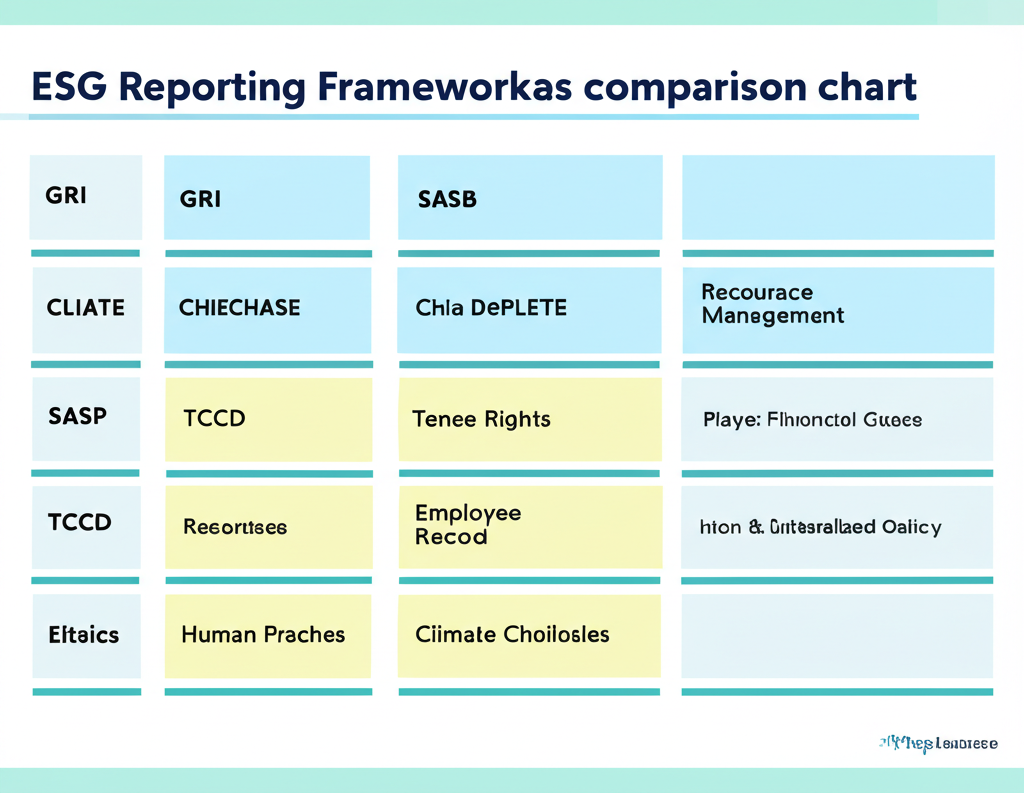
ESG Metrics That Matter to Investors
As investor interest in environmental, social, and governance (ESG) factors continues to grow, companies face the challenge of identifying and reporting on the ESG metrics that truly matter to the investment community. This article explores the ESG metrics that investors prioritize and provides guidance on effective reporting practices.
The Evolution of Investor Interest in ESG
Investor interest in ESG has evolved from a niche concern to a mainstream investment consideration. Today, investors view ESG performance not just as an ethical consideration but as a critical indicator of long-term business resilience, risk management, and value creation potential.
This evolution has been driven by several factors:
- Growing evidence of the financial materiality of ESG factors
- Increasing regulatory focus on ESG disclosure
- Rising client demand for sustainable investment options
- Recognition of systemic risks like climate change
- Shifting societal expectations about corporate responsibility
GetFeatured helps public companies develop effective ESG communication strategies that resonate with investors. Our team can help you identify the most relevant ESG metrics for your industry, develop robust measurement approaches, and create compelling ESG disclosures that enhance your investment proposition.
The Concept of ESG Materiality
Not all ESG metrics are equally relevant to all companies. The concept of "materiality" is central to determining which ESG factors matter most for a specific company or industry. Material ESG factors are those that:
- Have a significant impact on the company's financial or operational performance
- Present substantial risks or opportunities
- Are likely to influence investor decisions
Materiality assessments help companies identify which ESG factors deserve the most attention in their reporting and management practices. These assessments typically consider both:
- Financial materiality: Impact on enterprise value
- Impact materiality: Company's impact on the economy, environment, and people
Key Environmental Metrics
Environmental metrics focus on a company's impact on the natural world and its management of environmental risks. While specific priorities vary by industry, these environmental metrics consistently rank high in investor importance:
Climate Change Metrics
- Greenhouse gas emissions: Scope 1 (direct), Scope 2 (indirect from purchased energy), and increasingly Scope 3 (value chain) emissions
- Emission reduction targets: Short, medium, and long-term goals, including net-zero commitments
- Energy management: Energy consumption, energy intensity, and renewable energy usage
- Climate risk exposure: Physical and transition risks under different climate scenarios
- Climate governance: Board oversight and management approach to climate issues
Resource Management Metrics
- Water management: Water withdrawal, consumption, and discharge, particularly in water-stressed areas
- Waste management: Waste generation, recycling rates, and hazardous waste handling
- Material sourcing: Use of recycled or renewable materials and responsible sourcing practices
- Biodiversity impact: Land use, habitat protection, and biodiversity conservation efforts
Environmental Compliance and Management
- Environmental violations: Frequency and severity of environmental compliance issues
- Environmental management systems: Implementation of ISO 14001 or similar standards
- Environmental capex: Investment in pollution control, efficiency, and other environmental initiatives
Key Social Metrics
Social metrics address a company's relationships with employees, customers, suppliers, and communities. Investors are increasingly recognizing the material impact of these relationships on long-term value creation:
Human Capital Management
- Workforce diversity: Gender, racial/ethnic, and other diversity metrics across different organizational levels
- Pay equity: Gender and racial/ethnic pay gaps and remediation efforts
- Employee health and safety: Injury rates, lost time incident rates, and fatalities
- Employee engagement: Turnover rates, engagement scores, and retention metrics
- Training and development: Average hours of training and upskilling initiatives
- Labor practices: Union relationships, work stoppages, and labor controversies
Product Responsibility
- Product safety: Recalls, safety incidents, and safety management systems
- Data privacy and security: Privacy policies, data breaches, and cybersecurity measures
- Product quality: Customer satisfaction, complaint rates, and quality control measures
- Responsible marketing: Marketing practices, particularly for sensitive products or vulnerable populations
Community Relations
- Community engagement: Community investment, volunteer programs, and local hiring practices
- Human rights: Human rights policies, due diligence processes, and remediation mechanisms
- Indigenous relations: Engagement with indigenous communities and respect for their rights
- Supply chain management: Supplier code of conduct, audits, and responsible sourcing practices
Key Governance Metrics
Governance metrics address how a company is led and managed. Strong governance is often viewed as foundational to effective management of environmental and social factors:
Board Structure and Oversight
- Board diversity: Gender, racial/ethnic, and skill diversity of board members
- Board independence: Percentage of independent directors and independent leadership
- Board oversight of ESG: Committee responsibilities and board engagement with ESG issues
- Director expertise: Relevant skills and experience, including ESG expertise
Executive Compensation
- Pay-for-performance alignment: Correlation between executive pay and company performance
- ESG metrics in compensation: Integration of sustainability metrics in incentive plans
- CEO-to-median-worker pay ratio: Comparison of CEO compensation to that of the median employee
- Clawback provisions: Policies for recovering incentive compensation in cases of misconduct
Business Ethics and Transparency
- Ethics violations: Frequency and severity of ethical breaches and regulatory actions
- Whistleblower protection: Policies and procedures for reporting concerns
- Political activities: Political contributions, lobbying expenditures, and trade association memberships
- Tax transparency: Country-by-country reporting and effective tax rates
Industry-Specific ESG Metrics
While the metrics above are broadly relevant across industries, investors also look for industry-specific ESG metrics that address the unique material issues in different sectors:
Financial Services
- Responsible lending and investment policies
- Financial inclusion initiatives
- Systemic risk management
- Financed emissions and climate risk in portfolios
Healthcare
- Drug pricing and access
- Product safety and quality
- Clinical trial ethics
- Patient data security and privacy
Technology
- Data privacy and security
- Content moderation policies
- Algorithmic bias and AI ethics
- Digital divide initiatives
Manufacturing
- Supply chain labor practices
- Product lifecycle management
- Chemical safety and management
- Circular economy initiatives
Extractives
- Biodiversity and land management
- Community relations and indigenous rights
- Mine closure and reclamation
- Tailings management and safety
Best Practices for ESG Metric Reporting
Focus on Material Issues
Rather than trying to report on every possible ESG metric:
- Conduct a formal materiality assessment to identify the most relevant issues
- Focus reporting on the metrics that are most material to your business
- Explain why you've prioritized certain metrics over others
- Review materiality regularly as business conditions and stakeholder expectations evolve
Ensure Data Quality
Investors increasingly scrutinize the quality of ESG data:
- Implement robust data collection and verification processes
- Consider third-party assurance for key metrics
- Disclose methodology and assumptions
- Maintain consistent measurement approaches over time
- Acknowledge data limitations and areas for improvement
Provide Context and Targets
Raw data alone is insufficient for investor decision-making:
- Provide historical trends to show performance over time
- Include industry benchmarks where available
- Set clear, measurable targets for key metrics
- Explain the business context for performance changes
- Connect metrics to your overall business strategy
Align with Established Frameworks
Using recognized reporting frameworks enhances comparability and credibility:
- Consider industry-specific SASB standards for financially material metrics
- Use TCFD recommendations for climate-related disclosures
- Reference GRI standards for broader sustainability reporting
- Monitor developments from the International Sustainability Standards Board (ISSB)
- Explain your framework choices and how you've implemented them
Conclusion
As ESG continues to gain prominence in investment decision-making, companies that effectively identify, manage, and report on material ESG metrics will be better positioned to attract and retain investors. By focusing on the metrics that matter most to investors in your industry, ensuring data quality, providing appropriate context, and aligning with established frameworks, you can enhance the effectiveness of your ESG reporting and strengthen your company's value proposition.
Remember that ESG reporting is an evolving field. Staying informed about changing investor expectations and emerging best practices will help ensure your ESG metrics continue to meet the needs of the investment community.


